The History Book Club discussion

This topic is about
Staying On
HISTORY OF SOUTHERN ASIA
>
GLOSSARY - STAYING ON - THE RAJ QUARTET SERIES~ (Spoiler Thread)
date newest »
newest »
 newest »
newest »
 Indian Women's Traditional Clothing
Indian Women's Traditional Clothing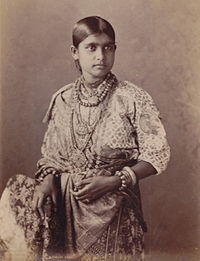
Clothing in India varies from region to region depending on the ethnicity, geography, climate and cultural traditions of the people of that region. Historically, men and women clothing has evolved from simple Langotas, and loincloths to cover the body to elaborate costumes not only used in daily wear but also on festive occasions as well as rituals and dance performances. In urban areas, western clothing is common and uniformly worn by people of all strata. India also has a great diversity in terms of weaves, fibers, colours and material of clothing. Colour codes are followed in clothing based on the religion and ritual concerned. For instance, Hindu ladies wear white clothes to indicate mourning, while Parsis and Christians wear white to weddings.
In India, woman's clothing varies widely and is closely associated with the local culture, religion and climate. Traditional Indian clothing for women in the north and east are saris or ghagra cholis and (lehengas) while many south Indian women traditionally wear sari and children wear pattu langa. Saris made out of silk are considered the most elegant. Mumbai, formerly known as Bombay, is one of India's fashion capitals. In many rural parts of India, traditional clothing is worn. Women wear a sari, a long sheet of colourful cloth, draped over a simple or fancy blouse. Little girls wear a pavada. Both are often patterned. Bindi is a part of women's make-up. Indo-western clothing is the fusion of Western and Subcontinental fashion. Churidar, dupatta, Khara Dupatta, gamchha, kurta, mundum neriyathum, sherwani are among other clothes.
The traditional style of clothing in India varies with male or female distinctions. This is still followed in the rural areas, though is changing in the urban areas. Girls before puberty wear a long skirt (called langa/paawada in Andhra) and a short blouse, called a choli, above it.(Source: http://en.wikipedia.org/wiki/Clothing...)
More:
http://www.culturalindia.net/indian-c...
http://hinduonline.co/HinduCulture/In...
http://www.walkthroughindia.com/lifes...
http://www.mapsofindia.com/india-dres...
http://traditionalclothingindia.blogs...
http://www.indianmirror.com/culture/c...
http://www.shalusharma.com/what-do-in...
http://en.wikipedia.org/wiki/Sari
(no image)Indian Fashion: Tradition, Innovation, Style by Arti Sandhu (no photo)
 by Pravina Shukla(no photo)
by Pravina Shukla(no photo) by Linda Lynton (no photo)
by Linda Lynton (no photo) by Chantal Boulanger (no photo)
by Chantal Boulanger (no photo) by Emma Tarlo (no photo)
by Emma Tarlo (no photo)
 Punjab
Punjab
Punjab (Listeni/pʌnˈdʒɑːb/; Punjabi: ਪੰਜਾਬ), also spelt Panjab, is a state in the northwest of the Republic of India, forming part of the larger Punjab region.The state is bordered by the Indian states of Himachal Pradesh to the east, Haryana to the south and southeast and Rajasthan to the southwest as well as the Pakistani province of Punjab to the west. It is also bounded to the north by the Indian state of Jammu and Kashmir. The state capital is located in Chandigarh, which is a Union Territory and also the capital of the neighbouring state of Haryana.
After the partition of India in 1947, the Punjab province of British India was divided between India and Pakistan. The Indian Punjab was divided in 1966 with the formation of the new states of Haryana and Himachal Pradesh, as well as the current state of Punjab. Punjab is the only state in India with a majority Sikh population.
The term Punjab comprises two words: "punj meaning five and ab meaning water, thus the land of five rivers." The Greeks referred to Punjab as Pentapotamia, an inland delta of five converging rivers. In Avesta, the sacred text of Zoroastrians, the Punjab region is associated with the ancient hapta həndu or Sapta Sindhu, the Land of Seven Rivers. Historically, the Punjab region has been the gateway to the Indian Subcontinent for people from Greece, Central Asia, Iran, and Afghanistan.
Agriculture is the largest industry in Punjab; it is the largest single producer of wheat in India. Other major industries include the manufacturing of scientific instruments, agricultural goods, electrical goods, financial services, machine tools, textiles, sewing machines, sports goods, starch, tourism, fertilisers, bicycles, garments, and the processing of pine oil and sugar. Punjab also has the largest number of steel rolling mill plants in India, which are located in Steel Town Mandi Gobindgarh, District Fatehgarh Sahib. (Source: http://en.wikipedia.org/wiki/Punjab,_...
More:
http://www.cs.cuw.edu/csc/csc175/proj...
http://asianhistory.about.com/od/glos...
http://digital.library.upenn.edu/wome...
http://www.princeton.edu/~achaney/tmv...
http://www.portmir.org.uk/assets/pdfs...
http://www.global.ucsb.edu/punjab/14....
http://www.cotf.edu/earthinfo/sasia/p...
http://www.punjabonline.com/servlet/l...
(no image)Administration of the Punjab by Kamla Sethi (no photo)
 by KPS GILL (no photo)
by KPS GILL (no photo) by J.S. Grewal (no photo)
by J.S. Grewal (no photo) by Miller Frederic P (no photo)
by Miller Frederic P (no photo) by Tim Coates (no photo)
by Tim Coates (no photo) by Andrea Diem (no photo)
by Andrea Diem (no photo) by Muzaffar Alam (no photo)
by Muzaffar Alam (no photo) by Imran Ali (no photo)
by Imran Ali (no photo) by Patrick O'Leary(no photo)
by Patrick O'Leary(no photo) by
by
 G.A. Henty
G.A. Henty
 Satyagraha
Satyagraha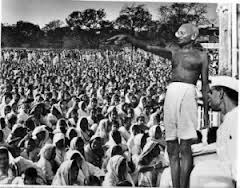
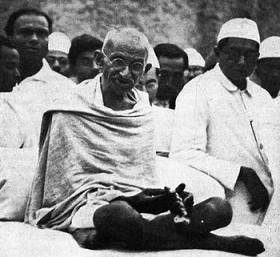
Satyagraha ,loosely translated as "insistence on truth" (satya "truth"; agraha "insistence") or soul force or truth force, is a particular philosophy and practice within the broader overall category generally known as nonviolent resistance or civil resistance. The term satyagraha was coined and developed by Mahatma Gandhi. He deployed satyagraha in the Indian independence movement and also during his earlier struggles in South Africa for Indian rights. Satyagraha theory influenced Nelson Mandela's struggle in South Africa under apartheid, Martin Luther King, Jr.'s and James Bevel's campaigns during the civil rights movement in the United States, and many other social justice and similar movements. Someone who practices satyagraha is a satyagrahi.
Gandhi envisioned satyagraha as not only a tactic to be used in acute political struggle, but as a universal solvent for injustice and harm. He felt that it was equally applicable to large-scale political struggle and to one-on-one interpersonal conflicts and that it should be taught to everyone.
He founded the Sabarmati Ashram to teach satyagraha. He asked satyagrahis to follow the following principles (Yamas described in Yoga Sutra):
Nonviolence (ahimsa)
Truth – this includes honesty, but goes beyond it to mean living fully in accord with and in devotion to that which is true
Non-stealing
Chastity (brahmacharya) – this includes sexual chastity, but also the subordination of other sensual desires to the primary devotion to truth
Non-possession (not the same as poverty)
Body-labor or bread-labor
Control of the palate
Fearlessness
Equal respect for all religions
Economic strategy such as boycotts (swadeshi)
Freedom from untouchability
On another occasion, he listed seven rules as “essential for every Satyagrahi in India”:
must have a living faith in God
must believe in truth and non-violence and have faith in the inherent goodness of human nature which he expects to evoke by suffering in the satyagraha effort
must be leading a chaste life, and be willing to die or lose all his possessions
must be a habitual khadi wearer and spinner
must abstain from alcohol and other intoxicants
must willingly carry out all the rules of discipline that are issued
must obey the jail rules unless they are specially devised to hurt his self-respect (Source: http://en.wikipedia.org/wiki/Satyagraha)
More:
http://www.britannica.com/EBchecked/t...
http://mettacenter.org/definitions/gl...
http://dfong.com/nonviol/basicsat.html
http://www.mkgandhi.org/faq/q17.htm
http://www.gandhifoundation.net/about...
http://www.oneworldonepeople.org/arti...
http://www.gandhi-manibhavan.org/gand...
(no image)Satyagraha by R.R. Diwakar(no photo)
(no image)Satyagrahas in Bengal, 1921-1939 by Buddhadeva Bhattacharyya (no photo)
 by Constance Dejong (no photo)
by Constance Dejong (no photo) by James K. Mathews (no photo)
by James K. Mathews (no photo) by Mark Shepard (no photo)
by Mark Shepard (no photo) by Mark A Mattaini (no photo)
by Mark A Mattaini (no photo) by William Borman (no photo)
by William Borman (no photo) by
by
 Mahatma Gandhi
Mahatma Gandhi by
by
 Maulana Wahiduddin Khan
Maulana Wahiduddin Khan by
by
 Christopher Key Chapple
Christopher Key Chapple by
by
 Ramin Jahanbegloo
Ramin Jahanbegloo
 Western Perceptions of Indian Culture
Western Perceptions of Indian Culture
India's diversity has inspired many writers to pen their perceptions of the country's culture. These writings paint a complex and often conflicting picture of the culture of India.
According to industry consultant Eugene M. Makar, for example, traditional Indian culture is defined by a relatively strict social hierarchy. He also mentions that from an early age, children are reminded of their roles and places in society. This is reinforced, Makar notes, by the way many believe gods and spirits have an integral and functional role in determining their life. Several differences such as religion divide the culture. However, a far more powerful division is the traditional Hindu bifurcation into non-polluting and polluting occupations. Strict social taboos have governed these groups for thousands of years, claims Makar. In recent years, particularly in cities, some of these lines have blurred and sometimes even disappeared. He writes important family relations extend as far as gotra, the mainly patrilinear lineage or clan assigned to a Hindu at birth. In rural areas & sometimes in urban areas as well, it is common that three or four generations of the family live under the same roof. The patriarch often resolves family issues.
Others have a different perception of Indian culture. According to an interview with C.K. Prahalad by Des Dearlove, author of many best selling business books, modern India is a country of very diverse cultures with many languages, religions and traditions. Children begin by coping and learning to accept and assimilate in this diversity. Prahalad - who was born in India and grew up there - claimed, in the interview, that Indians, like everyone else in the world, want to be treated as unique, as individuals, want to express themselves and seek innovation. In another report, Nancy Lockwood of Society for Human Resource Management, the world's largest human resources association with members in 140 countries, writes that in the past two decades or so, social change in India is in dramatic contrast to the expectations from traditional Indian culture. These changes have led to Indian families giving education opportunities to girls, accepting women working outside home, pursuing a career, and opening the possibility for women to attain managerial roles in corporate India. Lockwood claims that change is slow, yet the scale of cultural change can be sensed from the fact that of India's 397 million workers, 124 million are now women. The issues in India with women empowerment are similar to those elsewhere in the world.
According to Amartya Sen, the India born Nobel Laureate in Economics, the culture of modern India is a complex blend of its historical traditions, influences from the effects of colonialism over centuries and current Western culture - both collaterally and dialectically. Sen observes that external images of India in the West often tend to emphasise the difference - real or imagined - between India and the West.[20] There is a considerable inclination in the Western countries to distance and highlight the differences in Indian culture from the mainstream of Western traditions, rather than discover and show similarities. Western writers and media usually misses, in important ways, crucial aspects of Indian culture and traditions. The deep-seated heterogeneity of Indian traditions, in different parts of India, is neglected in these homogenised description of India. The perceptions of Indian culture, by those who weren't born and raised in India, tend to be one of at least three categories, writes Sen:
Exoticist approach: it concentrates on the wondrous aspects of the culture of India. The focus of this approach of understanding Indian culture is to present the different, the strange and as Hegel put it, "a country that has existed for millennia in the imaginations of the Europeans."
Magisterial approach: it assumes a sense of superiority and guardianship necessary to deal with India, a country that James Mill's imperialist history thought of as grotesquely primitive culture. While great many British observers did not agree with such views of India, and some non-British ones did, it is an approach that contributes to some confusion about the culture of India.
Curatorial approach: it attempts to observe, classify and record the diversity of Indian culture in different parts of India. The curators do not look only for the strange, are not weighed by political priorities, and tend to be more free from stereotypes. The curatorial approach, nevertheless, have an inclination to see Indian culture as more special and extraordinarily interesting than it actually may be. The curatorial approach, one inspired by systematic curiosity for the cultural diversity of India within India, is mostly absent.
More:
http://sanskrit.org/?p=741
http://www.ikfoundation.org.uk/semina...
http://www.dnaindia.com/mumbai/report...
http://www.2point6billion.com/news/20...
https://sites.psu.edu/rachelthomas/20...
http://www.theindiansabroad.com/2010/...
http://www.mapsofindia.com/culture/in...
http://goindia.about.com/od/indiancul...
(no image)The National Culture of India by S. Abid Hussain (no photo)
 by Friedhelm Hardy (no photo)
by Friedhelm Hardy (no photo) by Carol E. Henderson (no photo)
by Carol E. Henderson (no photo) by Kathleen Kuiper (no photo)
by Kathleen Kuiper (no photo) by Kalpana Rajaram (no photo)
by Kalpana Rajaram (no photo) by
by
 Anita Ganeri
Anita Ganeri by
by
 Sri Aurobindo
Sri Aurobindo by
by
 Michel Danino
Michel Danino
 Cripps Mission
Cripps Mission The British were alarmed at the successive victories of Japan during 1940s. When Burma was turned into a battle field and the war reached the Indian boarders, the British started feeling more concerned about the future of India. Situation in the country was further complicated as the Congress wanted to take advantage of the situation by accelerating their efforts in their struggle for independence. Moreover the differences between the Congress and the Muslim League were widening fast and visibly there was no chance to bring both the parties on a common agenda. In these circumstances, the British Government sent a mission to India in 1942 under Sir Stafford Cripps, the Lord Privy Seal, in order to achieve Hindu-Muslim consensus on some constitutional arrangement and to convince the Indians to postpone their struggle till the end of the Second World War.
Cripps arrived in Delhi on March 22, 1942 and had series of meetings with the leading Indian politicians including Jawaharlal Nehru, Abul Kalam Azad, Quaid-i-Azam, Sir Sikandar Hayat Khan, A. K. Fazlul Haq, Dr. Ambedkar, V.D. Savarkar and Tej Bhadur Sappru etc. In the meetings Cripps tried to plead his case before these political leaders and tried to convince them to accept his following proposals:
During the course of the war, the British would retain their hold on India. Once the war finished, India would be granted dominion status with complete external and internal autonomy. It would however, be associated with the United Kingdom and other Dominions by a common allegiance to the Crown.
At the end of the war, a Constituent Assembly would be set up with the power to frame the future constitution of India. The members of the assembly were to be elected on the basis of proportional representation by the provincial assemblies. Princely States would also be given representation in the Constituent Assembly.
The provinces not agreeing to the new constitution would have the right to keep itself out of the proposed Union. Such provinces would also be entitled to create their own separate Union. The British government would also invite them to join the commonwealth.
During the war an interim government comprising of different parties of India would be constituted. However, defence and external affairs would be the sole responsibility of the viceroy.
Quaid-i-Azam considered these proposals as “unsatisfactory” and was of the view that the acceptance of the Cripps proposals would “take the Muslims to the gallows.” He said that the proposals have “aroused our deepest anxieties and grave apprehensions, specially with reference to Pakistan Scheme which is a matter of life and death for Muslim India. We will, therefore, endeavour that the principle of Pakistan which finds only veiled recognition in the Document should be conceded in unequivocal terms.” The Quaid, however, was happy to know that in the Cripps proposals, at least the British Government had agreed in principle to the Muslim League’s demand of the partition of India. Yet, Quaid-i-Azam wanted the British Government and Cripps to thoroughly amend the proposals to make them acceptable for the Muslim League.
Actually Quaid-i-Azam and other Muslim League leaders were convinced that Cripps was a traditional supporter of Congress and thus could not present an objective solution to the problem. On the arrival of Cripps, Quaid-i-Azam made it clear that he was a friend of Congress and would only support the Congress’ interests. Congress leaders themselves accepted that Cripps was their man. On his first visit to India, Cripps in fact attended the meetings of the Congress Working Committee. He also visited Gandhi and was so much impressed by him that he wore white khadi suit. He openly ridiculed the Muslim League’s demand for Pakistan when he said, “we cannot deny 25 carore Hindus desire of United India only because 9 carore Muslims oppose it.” In fact the proposals Cripps presented were mainly consisted of the ideas which were discussed in a meeting between Nehru and Cripps in 1938.
http://historypak.com/cripps-mission-...
http://www.britannica.com/EBchecked/t...
 Hill Stations
Hill Stations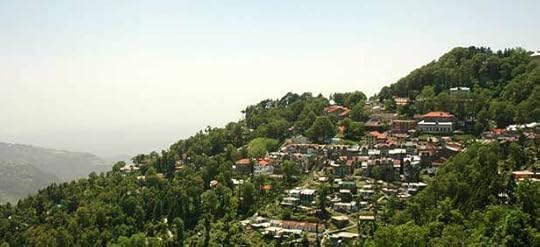
Located on peaks that loom like sentinels over heat-shimmering plains, hill stations remain among the most curious monuments to the British colonial presence in India. Their origins can be traced to the effort in the early nineteenth century to establish sanitaria within the subcontinent where European invalids could recover from the heat and disease of the tropics. But hill stations soon assumed an importance that far exceeded their initial therapeutic attraction. To these cloud-enshrouded sanctuaries the British expatriate elite came for seasonal relief not merely from the physical toll of a harsh climate but from the social and psychological toll of an alien culture. Here they established closed communities of their own kind in a setting of their own design. As self-styled guardians of the raj, however, they also sought to supervise their subjects from these commanding heights. Here they established political headquarters and military cantonments, centers of power from whence they issued and executed orders with an Olympian air of omnipotence. Hill stations, in effect, served both as sites of refuge and as sites for surveillance. These were places where the British endeavored at one and the same time to engage with and to disengage from the dominion they ruled. This paradox and its implications for the imperial endeavor give the hill stations their significance.
Hill stations generally have been seen as places where the British went to play. These were the colonial equivalents of Bath or Brighton, cliquish resorts where rakish officers, vampish ladies, ambitious bureaucrats, and bored housewives engaged in endless parties and gossip. Rudyard Kipling did a great deal to engrave this image in the popular mind with his stories about Simla. Yet his portrait drew upon perceptions and suspicions that were already widespread among his contemporaries. Despite residents' protestations, the air of scandal settled
around Simla soon after its rise to prominence, and it lingers there still. Other hill stations loomed less large in the public eye, but they too established reputations for sportiveness. Here the British appeared to do as they pleased, unrestrained by the demands and debilities that the imperial order inflicted on them in the plains.(Source: http://publishing.cdlib.org/ucpresseb...)
More:
http://www.nytimes.com/1987/03/15/mag...
http://www.bbc.com/travel/feature/201...
http://www.lonelyplanet.com/asia/trav...
http://myweb.tiscali.co.uk/kenanderso...
http://en.wikipedia.org/wiki/Shimla
(no image)Simla by Pat Barr(no photo)
 by Dane Kennedy (no photo)
by Dane Kennedy (no photo) by Pamela Kanwar (no photo)
by Pamela Kanwar (no photo) by Saros Cowasjee no photo
by Saros Cowasjee no photo by Raaja Bhasin(no photo)
by Raaja Bhasin(no photo) by William Riddell Birdwood (no photo)
by William Riddell Birdwood (no photo) by Ruth Unrau (no photo)
by Ruth Unrau (no photo) by
by
 Mollie Panter-Downes
Mollie Panter-Downes
 The Princely States
The Princely States
A princely state (also called native state (legally) or Indian state) was a nominally sovereign entity of India during the British Raj that was not directly governed by the British, but rather by a local ruler under a form of indirect rule, subject to a subsidiary alliance and the suzerainty or paramountcy of the British Crown.
There were officially 565 princely states in India at the time of independence in 1947, but the great majority had contracted with the Viceroy of India to provide public services and tax collection. Only 21 major ones had actual state governments, and among them only four were large (Hyderabad, Mysore, Baroda and Jammu and Kashmir). They acceded to one or other of the two new independent nations of India and Pakistan between 1947 and 1949. The accession process was largely peaceful except in the case of Jammu & Kashmir (whose king decided to accede to India, but only after an invasion by Pakistan based tribal militia) and Hyderabad. All the princes were eventually pensioned off. Some two hundred of the states had an area of less than 25 square kilometres (10 square miles).[5]
Several of the states acceded to Pakistan between 1947 and 1948, becoming the princely states of Pakistan. A few of these retained their autonomy until the 1970s
British relationship with the princely states
India under the British Raj (the "Indian Empire") consisted of two types of territory: British India and the Native States or Princely states. In its Interpretation Act 1889, the British Parliament adopted the following definitions:
(4.) The expression "British India" shall mean all territories and places within Her Majesty's dominions which are for the time being governed by Her Majesty through the Governor-General of India or through any governor or other officer subordinate to the Governor-General of India.
(5.) The expression "India" shall mean British India together with any territories of any native prince or chief under the suzerainty of Her Majesty exercised through the Governor-General of India, or through any governor or other officer subordinate to the Governor-General of India.
In general the term "British India" had been used (and is still used) also to refer to the regions under the rule of the East India Company in India from 1774 to 1858. The term has also been used to refer to the "British in India".
The British Crown's suzerainty over 175 princely states, generally the largest and most important, was exercised in the name of the British Crown by the central government of British India under the Viceroy; the remaining approximately 400 states were influenced by Agents answerable to the provincial governments of British India under a Governor, Lieutenant-Governor, or Chief Commissioner. A clear distinction between "dominion" and "suzerainty" was supplied by the jurisdiction of the courts of law: the law of British India rested upon the legislation enacted by the British Parliament, and the legislative powers those laws vested in the various governments of British India, both central and local; in contrast, the courts of the princely states existed under the authority of the respective rulers of those states. (Source: http://en.wikipedia.org/wiki/Princely...)
More:
http://www.worldstatesmen.org/India_p...
http://www.almanachdegotha.org/id242....
http://www.slideshare.net/josethottam...
http://www.rulers.org/indstat1.html
http://www.answers.com/topic/princely...
http://faroutliers.blogspot.com/2008/...
http://indiansaga.com/history/postind...
(no image)People's Movements In The Princely States by Y. Vaikuntham (no photo)
(no image)The Princely States Of India: A Chronological Checklist Of Their Rulers by David P. Henige (no photo)
 by Joanna Williams (no photo)
by Joanna Williams (no photo) by Barbara N. Ramusack (no photo)
by Barbara N. Ramusack (no photo) by Sharada Dwivedi (no photo)
by Sharada Dwivedi (no photo) by Hugh Purcell (no photo)
by Hugh Purcell (no photo) by John Lord (no photo)
by John Lord (no photo) by
by
 Khushwant Singh
Khushwant Singh by
by
 Jake Smith
Jake Smith
 Here is an interesting interview from the NY Times regarding the religions of India. Thanks to Martin for this link.
Here is an interesting interview from the NY Times regarding the religions of India. Thanks to Martin for this link.http://opinionator.blogs.nytimes.com/...
 Delhi
Delhi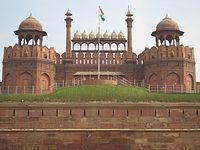
Delhi, also known as the National Capital Territory of India, is the capital territory of India. Such is the nature of urban expansion in Delhi that its growth has expanded beyond the NCT to incorporate towns in neighbouring states and at its largest extent can count a population of about 25 million residents as of 2014, and is the largest urban agglomeration in India by land area and population. It is also the 4th most populous city on the planet. The NCT and its urban region have been given the special status of National Capital Region (NCR) under the Constitution of India's 69th amendment act of 1991. The NCR includes the neighbouring cities of Gurgaon, Noida, Ghaziabad, Faridabad,Greater Faridabad called as Neharpar, Greater Noida, Sonepat, Panipat, Karnal, Rohtak, Rewari, Baghpat, Meerut, Alwar, Bharatpur and other nearby towns.
A union territory, the political administration of the NCT of Delhi today more closely resembles that of a state of India, with its own legislature, high court and an executive council of ministers headed by a Chief Minister. New Delhi is jointly administered by the federal government of India and the local government of Delhi, and is the capital of the NCT of Delhi.
Delhi has been continuously inhabited since the 6th century BC. Through most of its history, Delhi has served as a capital of various kingdoms and empires. It has been captured, ransacked and rebuilt several times, particularly during the medieval period, and modern Delhi is a cluster of a number of cities spread across the metropolitan region.Delhi was the site of ancient Indraprastha (Khandavprastha), the ancient capital of the Pandavas during the Mahabharata. Delhi re-emerged as a major political, cultural and commercial city along the trade routes between northwest India and the Gangetic plain during the Delhi Sultanate era.
In AD 1639, the Mughal emperor Shah Jahan built a new walled city named Shahjahanabad, in Delhi, which served as the capital of the Mughal Empire from 1649 until the Rebellion of 1857. Shahjahanabad today is Old Delhi. The greater part of Old Delhi is still confined within the space of Shah Jahān's walls, and several gates built during his rule—the Kashmiri Gate, the Delhi Gate, the Turkman Gate, and the Ajmeri Gate—still stand. In 1911 the British determined to shift the capital of India from Calcutta (Kolkata) to Delhi, and a three-member committee was formed to plan the construction of the new administrative center. The key architect on the committee was Sir Edwin Lutyens; it was he who gave shape to the city. The British moved to the partially built New Delhi in 1912, and construction was completed in 1931. A new capital city, New Delhi, was built to the south of the old city during the 1920s. When the British left India in 1947, New Delhi became its national capital and seat of the union government. (Source: http://en.wikipedia.org/wiki/Delhi)
More:
http://en.wikipedia.org/wiki/Delhi
http://www.delhitourism.gov.in/delhit...
http://delhi.gov.in/wps/wcm/connect/D...
http://www.bharatonline.com/delhi/his...
http://www.sjsu.edu/faculty/watkins/d...
http://www.mapsofindia.com/delhi/hist...
http://www.slideshare.net/shresth.bha...
 by Lucy Peck (no photo)
by Lucy Peck (no photo) by Mahmood Farooqui(no photo)
by Mahmood Farooqui(no photo) by
by
 Rana Dasgupta
Rana Dasgupta  by
by
 William Dalrymple
William Dalrymple by
by
 William Dalrymple
William Dalrymple by
by
 Khushwant Singh
Khushwant Singh by
by
 Upinder Singh
Upinder Singh
 Cricket
Cricket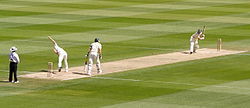
Cricket is a bat-and-ball game played between two teams of 11 players each on a field at the centre of which is a rectangular 22-yard long pitch. Each team takes its turn to bat, attempting to score runs, while the other team fields. Each turn is known as an innings.
The bowler delivers the ball to the batsman who attempts to hit the ball with his bat away from the fielders so he can run to the other end of the pitch and score a run. Each batsman continues batting until he is out. The batting team continues batting until ten batsmen are out, or a specified number of overs of six balls have been bowled, at which point the teams switch roles and the fielding team comes in to bat.
In professional cricket the length of a game ranges from 20 overs per side to Test cricket played over five days. The Laws of Cricket are maintained by the International Cricket Council (ICC) and the Marylebone Cricket Club (MCC) with additional Standard Playing Conditions for Test matches and One Day Internationals.
Cricket was first played in southern England in the 16th century. By the end of the 18th century, it had developed to be the national sport of England. The expansion of the British Empire led to cricket being played overseas and by the mid-19th century the first international match was held. ICC, the game's governing body, has 10 full members. The game is most popular in Australasia, England, the Indian subcontinent, the West Indies and Southern Africa. (Source: http://en.wikipedia.org/wiki/Cricket)
More:
http://sports.espn.go.com/espn/eticke...
http://www.smithsonianmag.com/ist/?ne...
http://www.youtube.com/watch?v=fzqh6_...
http://www.cricket-rules.com/
http://www.lords.org/mcc/laws-of-cric...
http://news.bbc.co.uk/sportacademy/hi...
 by William McInnes (no photo)
by William McInnes (no photo) by Simon Hughes(no photo)
by Simon Hughes(no photo) by Jeff Fletcher (no photo)
by Jeff Fletcher (no photo) by Marcus Berkmann(no photo)
by Marcus Berkmann(no photo) by
by
 Ramachandra Guha
Ramachandra Guha by
by
 Neville Cardus
Neville Cardus
A good piece in The New Republic
The Origins of Paul Scott's Vast Masterpiece
The epic of colonial India
http://www.newrepublic.com/article/11...
Source: The New Republic
The Origins of Paul Scott's Vast Masterpiece
The epic of colonial India
http://www.newrepublic.com/article/11...
Source: The New Republic
 What a great way this was to spend an afternoon. I appreciate all the hard work that went into this, Jill. Very informative and triggered the memory for me that while I haven't read The Raj Quartet, I did see the excellent series that PBS showed here in Atlanta some time ago. So, at least, I will be able to follow the discussion until I can read the books. Many thanks.
What a great way this was to spend an afternoon. I appreciate all the hard work that went into this, Jill. Very informative and triggered the memory for me that while I haven't read The Raj Quartet, I did see the excellent series that PBS showed here in Atlanta some time ago. So, at least, I will be able to follow the discussion until I can read the books. Many thanks.
 Thanks, Pamela. We hope you will join in the discussion. Even if you have not read the books yet, you have seen the PBS version, so you are aware of the premise of the Quartet. It is not necessary to read them in order but to be honest, it does help.
Thanks, Pamela. We hope you will join in the discussion. Even if you have not read the books yet, you have seen the PBS version, so you are aware of the premise of the Quartet. It is not necessary to read them in order but to be honest, it does help.
I think Pamela that each of these books stands alone and the others can be filled in along the way.
 What we try to do, Pamela, is give a quick overview in the discussions questions of a character who is mentioned in Book IV who has appeared before......we hope that is helpful to the first time reader.
What we try to do, Pamela, is give a quick overview in the discussions questions of a character who is mentioned in Book IV who has appeared before......we hope that is helpful to the first time reader.
 The Partition and Independence of India
The Partition and Independence of India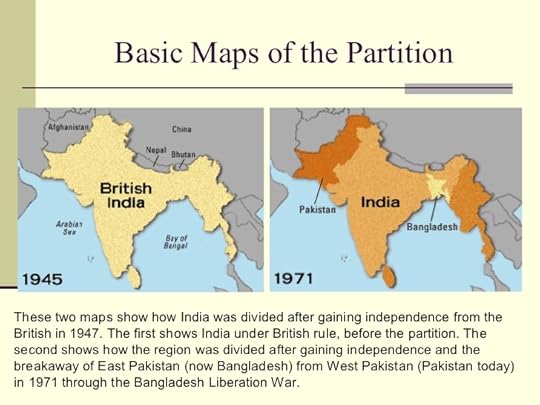
The Indian subcontinent was partitioned into Hindu-dominated but nominally secular India and the newly created Muslim state of Pakistan after India’s independence from Great Britain in 1947. Severe rioting and population movement ensued and an estimated half a million people were killed in communal violence. About a million people were left homeless. Since partition, the territory of Jammu and Kashmir has remained in dispute, with Pakistan and India both holding sectors.
The name Pakistan was derived from an idea first suggested in 1933 when a student, Chaudhuri Rahmat Ali, proposed that there should be a separate homeland which would be comprised of the Muslim-majority provinces in the north-west as well as the geographically contiguous princely state of Jammu and Kashmir.
The name was formulated from: P for Punjab, A for the Afghanis of the north-west frontier, K for Kashmir, S for Sind and Tan denoting Baluchistan. The word also means land of the pure in Urdu.
The partition of the Subcontinent, however, led to severe rioting and population movement as Muslims, Sikhs and Hindus found themselves on the wrong side of the partitioned provinces of Punjab and Bengal. The latter of these became East Pakistan. An estimated half a million people died in communal violence, millions more became homeless.
Jammu and Kashmir, a collection of culturally distinct regions, were nominally brought under the rule of Sikhs in the early 19th Century. After the British fought the Sikhs in 1846, instead of assuming direct control over the area, Britain installed a Hindu ruler as Maharaja.
The Maharaja's territorial possessions included the Buddhist area of Ladakh, the predominantly Hindu region of Jammu, the majority Muslim valley of Kashmir, as well as smaller Muslim kingdoms in the west.
In the days of the British Empire, the state of Jammu and Kashmir was one of more than 560 autonomous princely states owing allegiance to Britain. At independence, the rulers were advised to join, by means of an instrument of accession, either of the two new dominions, India or Pakistan, bearing in mind their state's geographical position and the religion of their inhabitants.
By August 1947, the date of partition, the ruler of Jammu and Kashmir had not decided which dominion to join.
Over 50 years later, Pakistanis still believe that Jammu and Kashmir should have become part of Pakistan because the majority of the state's population, concentrated in the valley of Kashmir, is Muslim.
India, says the state of Jammu and Kashmir belongs to India because by the October 1947 instrument of accession, the Maharaja finally agreed to join India.(Source: http://www.slideshare.net/jcrowder/pa...
More:
http://news.bbc.co.uk/hi/english/stat...
http://asianhistory.about.com/od/indi...
http://www.bbc.com/news/world-south-a...
http://www.newyorker.com/magazine/201...
http://www.economist.com/news/books-a...
http://www.mapsofindia.com/my-india/p...
https://www.sscnet.ucla.edu/southasia...
 by Ian Talbot(no photo)
by Ian Talbot(no photo) by H.M. Seervai(no photo)
by H.M. Seervai(no photo) by Ritu Menon(no photo)
by Ritu Menon(no photo) by D.C. Jha(no photo)
by D.C. Jha(no photo) by Kaushik Roy(no photo)
by Kaushik Roy(no photo) by L.A. Sherwani (no photo)
by L.A. Sherwani (no photo) by Jeff T. Hay(no photo)
by Jeff T. Hay(no photo) by Mohammed Yunus(no photo)
by Mohammed Yunus(no photo) by
by
 Urvashi Butalia
Urvashi Butalia by
by
 Yasmin Khan
Yasmin Khan
message 73:
by
Bentley, Group Founder, Leader, Chief
(last edited Sep 09, 2015 06:01PM)
(new)
-
rated it 4 stars
WARNING HUGE SPOILERS FOR UPCOMING BOOK - STAYING ON
This is a splendid post from Martin but it contains huge spoilers for an upcoming book:
Martin stated:
I haven't yet read Staying On, but from the account below, I'd speculate there were more than a few upper-class Brits who settled into lower figurative castes in India.
http://www.telegraph.co.uk/travel/des...
 by
by
 Paul Scott
Paul Scott
This is a splendid post from Martin but it contains huge spoilers for an upcoming book:
Martin stated:
I haven't yet read Staying On, but from the account below, I'd speculate there were more than a few upper-class Brits who settled into lower figurative castes in India.
http://www.telegraph.co.uk/travel/des...
 by
by
 Paul Scott
Paul Scott
message 75:
by
Bentley, Group Founder, Leader, Chief
(last edited Oct 31, 2015 12:58PM)
(new)
-
rated it 4 stars
Regarding Roads in India
The Times - Dariyabad:
http://timesofindia.indiatimes.com/ci...
The Times - Sindri:
http://timesofindia.indiatimes.com/ci...
The Hindu
http://www.thehindu.com/todays-paper/...
Know - Our Deplorable City Roads:
http://www.knoweb.in/2015/01/our-depl...
Genesis of Human Development in North-East India: A Diagnostic Analysis:
https://books.google.com/books?id=B3y...
It has its own website - Bad Roads in India.com:
http://www.badroadsinindia.com
Deplorable road conditions along Pak border cripple BSF - The Tribune:
http://www.tribuneindia.com/news/nati...
Publish a Letter.com - India:
http://www.publishaletter.com/readlet...
Another on a different major road where they charge a toll: http://www.publishaletter.com/readlet...
PWD minister warns engineers over deplorable roads in UP
http://www.eenaduindia.com/State/Utta...
Here is a photo of National Highway - #44 -
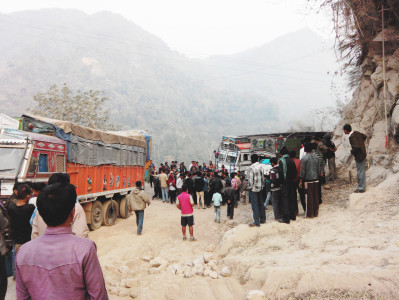
The Shillong Times:
http://www.theshillongtimes.com/2014/...
The Times - Dariyabad:
http://timesofindia.indiatimes.com/ci...
The Times - Sindri:
http://timesofindia.indiatimes.com/ci...
The Hindu
http://www.thehindu.com/todays-paper/...
Know - Our Deplorable City Roads:
http://www.knoweb.in/2015/01/our-depl...
Genesis of Human Development in North-East India: A Diagnostic Analysis:
https://books.google.com/books?id=B3y...
It has its own website - Bad Roads in India.com:
http://www.badroadsinindia.com
Deplorable road conditions along Pak border cripple BSF - The Tribune:
http://www.tribuneindia.com/news/nati...
Publish a Letter.com - India:
http://www.publishaletter.com/readlet...
Another on a different major road where they charge a toll: http://www.publishaletter.com/readlet...
PWD minister warns engineers over deplorable roads in UP
http://www.eenaduindia.com/State/Utta...
Here is a photo of National Highway - #44 -

The Shillong Times:
http://www.theshillongtimes.com/2014/...
message 77:
by
Bentley, Group Founder, Leader, Chief
(last edited Oct 31, 2015 01:04PM)
(new)
-
rated it 4 stars
The Roads in Calcutta - every city is the same
http://www.telegraphindia.com/1131025...
Joy FM take on VR & Roads Ministers
http://sankofaonline.com/archives/27076
http://www.telegraphindia.com/1131025...
Joy FM take on VR & Roads Ministers
http://sankofaonline.com/archives/27076
message 78:
by
Bentley, Group Founder, Leader, Chief
(last edited Oct 31, 2015 01:06PM)
(new)
-
rated it 4 stars
National Highway 37

By the way this highway is a national highway in India and is not being built or being fixed - these are the way the roads are - dangerous.

By the way this highway is a national highway in India and is not being built or being fixed - these are the way the roads are - dangerous.
Regarding India's Tata and Information Technology jobs of Americans:
Source: Los Angeles - date of publication - Today, October 31, 2015
A loophole in immigration law is costing thousands of American jobs
http://www.latimes.com/business/hiltz...
Source: Los Angeles - date of publication - Today, October 31, 2015
A loophole in immigration law is costing thousands of American jobs
http://www.latimes.com/business/hiltz...
 Wonderful thread, Bentley! Simply packed with important information and great links. It stands at the crossroads of several deeply moving discussions I've been having over the last few months. I need to pick up my reading speed and get to the last books in Paul Scott's magnificent series.
Wonderful thread, Bentley! Simply packed with important information and great links. It stands at the crossroads of several deeply moving discussions I've been having over the last few months. I need to pick up my reading speed and get to the last books in Paul Scott's magnificent series.
Yes, Jill has done a phenomenal job with this series. India has come a long way as well.
On this discussion thread you do not have to cite the book or the author being discussed - on other threads it would be the author's photo and link.
On this discussion thread you do not have to cite the book or the author being discussed - on other threads it would be the author's photo and link.
 Please join us, Hana. It is a great read and Scott's writing style makes the reader think and interpret his meaning which is challenging.
Please join us, Hana. It is a great read and Scott's writing style makes the reader think and interpret his meaning which is challenging.Thanks for the kind words, Bentley.
message 84:
by
Bentley, Group Founder, Leader, Chief
(last edited Nov 22, 2015 08:28AM)
(new)
-
rated it 4 stars
 Muhammad Ali Jinnah
Muhammad Ali Jinnah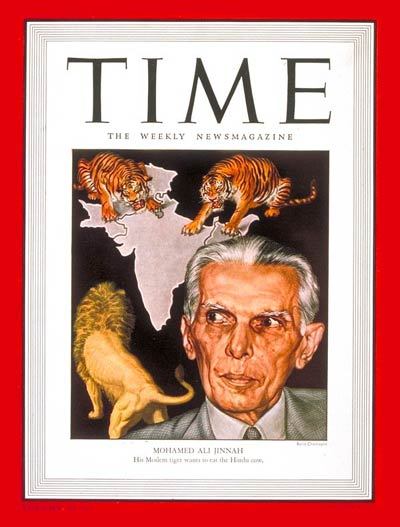
Muḥammad ʿAlī Jināḥ, born Mahomedali Jinnahbhai; 25 December 1876 – 11 September 1948) was a lawyer, politician, and the founder of Pakistan. Jinnah served as leader of the All-India Muslim League from 1913 until Pakistan's independence on 14 August 1947, and then as Pakistan's first Governor-General from independence until his death. He is revered in Pakistan as Quaid-i-Azam (Urdu: قائد اعظم Great Leader) and Baba-i-Qaum (Urdu: بابائے قوم Father of the Nation). His birthday is observed as a national holiday.
Born in Karachi and trained as a barrister at Lincoln's Inn in London, Jinnah rose to prominence in the Indian National Congress in the first two decades of the 20th century. In these early years of his political career, Jinnah advocated Hindu–Muslim unity, helping to shape the 1916 Lucknow Pact between the Congress and the All-India Muslim League, in which Jinnah had also become prominent. Jinnah became a key leader in the All India Home Rule League, and proposed a fourteen-point constitutional reform plan to safeguard the political rights of Muslims. In 1920, however, Jinnah resigned from the Congress when it agreed to follow a campaign of satyagraha, or non-violent resistance, advocated by Mohandas Gandhi.
By 1940, Jinnah had come to believe that Indian Muslims should have their own state. In that year, the Muslim League, led by Jinnah, passed the Lahore Resolution, demanding a separate nation. During the Second World War, the League gained strength while leaders of the Congress were imprisoned, and in the elections held shortly after the war, it won most of the seats reserved for Muslims. Ultimately, the Congress and the Muslim League could not reach a power-sharing formula for a united India, leading all parties to agree to separate independence of a predominately Hindu India, and for a Muslim-majority state, to be called Pakistan.
As the first Governor-General of Pakistan, Jinnah worked to establish the new nation's government and policies, and to aid the millions of Muslim migrants who had emigrated from the new nation of India to Pakistan after the partition, personally supervising the establishment of refugee camps. Jinnah died at age 71 in September 1948, just over a year after Pakistan gained independence from the British Raj. He left a deep and respected legacy in Pakistan. According to his biographer, Stanley Wolpert, he remains Pakistan's greatest leader.
More:
http://www.britannica.com/biography/M...
http://www.bbc.co.uk/history/historic...
https://www.nytimes.com/books/first/a...
http://www.pakistani.org/pakistan/leg...
http://www.biography.com/people/muham...
https://en.wikiquote.org/wiki/Muhamma...
http://www.bbc.com/news/world-asia-24...
 by Jesse Russell (no photo)
by Jesse Russell (no photo) by K.K. Aziz (no photo)
by K.K. Aziz (no photo) by Hajra Meeks (no photo)
by Hajra Meeks (no photo) by Books LLC (no photo)
by Books LLC (no photo) by Source Wikipedia (no photo)
by Source Wikipedia (no photo) by
by
 Stanley Wolpert
Stanley Wolpert by
by
 Yasmin Khan
Yasmin Khan by
by
 Ayesha Jalal
Ayesha Jalal
 I turned 24 last week. Quite young to learn what this life is all about. It has been more than six years since I left school. Even longer since I last saw the "inexpensive" NCERT text books which many Indian students at school cram before their school exams. During almost two decades of school and university I was constantly reminded of the important role this bookish knowledge would play in future. True this has been to a certain extent - as I travel the world today and meet a new nationalities frequently, hours spent prodding over my school atlas during school days seems to have be the most useful "cramming" I ever did.
I turned 24 last week. Quite young to learn what this life is all about. It has been more than six years since I left school. Even longer since I last saw the "inexpensive" NCERT text books which many Indian students at school cram before their school exams. During almost two decades of school and university I was constantly reminded of the important role this bookish knowledge would play in future. True this has been to a certain extent - as I travel the world today and meet a new nationalities frequently, hours spent prodding over my school atlas during school days seems to have be the most useful "cramming" I ever did.What no one ever told me was that paragraph written on the on the 3rd page on my NCERT books before the table of contents would become central to my thoughts as I grow old. I am talking about the following line printed in dull black and white which no teacher ever read out to me in the class:
Gandhi's Talisman
I will give you a talisman. Whenever you are in doubt, or when the self becomes too much with you, apply the following test. Recall the face of the poorest and the weakest man [woman] whom you may have seen, and ask yourself, if the step you contemplate is going to be of any use to him [her]. Will he [she] gain anything by it? Will it restore him [her] to a control over his [her] own life and destiny? In other words, will it lead to swaraj [freedom] for the hungry and spiritually starving millions? Then you will find your doubts and your self melt away."
No days passes in my life today without thinking on this "great" man. I have put great in quotes since I do not want to argue in any way about the greatness or failure of Gandhi.
Going back to my NCERT books, I am inclined to say that perhaps this page on Gandhi's Talisman is the one which I will never forget.
I haven't ever yet made use of this Talisman till now. Never occurred to me to use it at any moment of difficulty in my life. However, there is this feeling that these are golden words which can be of great benefit to the world. They well might be since Gandhi's another lines "Be the change you want to see in this world" were the concluding remarks made by my professor of sustainable development at Cambridge. Strange it is to me that a professor who doesn't know what NCERT stands for made me realize the power of this Talisman.
Coming back to the Talisman, lets see if I ever use it. But there is one thing which I have recently realized. If anyone would ask me what is the single most important tip ( or tactic) which we may make use of preached by Gandhi, I would say - self respect. Perhaps I realized this during my stay away from India. It took an external environment to make me realize what this self respect is all about. It seems to be the confidence which we should have despite being low or seemingly backward - the confidence which stems from the fact that we accept our not so cheerful realities and yet demand equal treatment from everyone by making the promise of being honest in our attempt to make a better future. It is the confidence which stems from our attitude of not blaming others for our situation and accepting our faults in the real sense. It is about making true promises to ourselves that we will be the best so that tomorrow when we stand in front of our loved ones we can look into their eyes with pride and satisfaction. It is about being true to ourselves as per the value system which has been inculcated in us during our upbringing. Don't know if all this matches with what Gandhi said in toto; but this seems to what he tried to convey - at least to me.
https://www.cbselectures.com/class-xt...
https://www.cbselectures.com/class-ix...
https://www.cbselectures.com/class-vi...
https://www.cbselectures.com/class-vi...
Books mentioned in this topic
Staying On (other topics)The Making of Pakistan: A Study in Nationalism (other topics)
Jinnah of Pakistan (other topics)
National Symbols of Pakistan: Urdu, Indus River, State Emblem of Pakistan, Muhammad Ali Jinnah, Star and Crescent, Snow Leopard (other topics)
Muhammad Ali Jinnah (other topics)
More...
Authors mentioned in this topic
K.K. Aziz (other topics)Source Wikipedia (other topics)
Books LLC (other topics)
Ayesha Jalal (other topics)
Jesse Russell (other topics)
More...



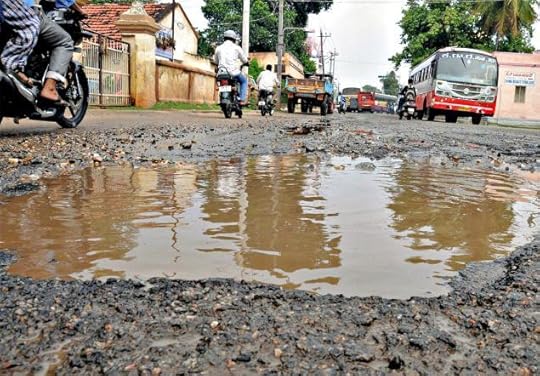


The River Ganges or Ganga is perhaps the holiest river in any religion. Though equally polluted, it bears immense significance to the Hindus. Ganga originates from the Gangotri glacier at Gaumukh in the Indian Himalayas at 4,100 meters above sea level, and flows 2,525 km across northern India before meeting the Bay of Bengal in the east India and Bangladesh. As a river, the Ganga contributes to more than 25 per cent of India's total water resources.
Besides being a sacred river, Ganga is also worshiped as a deity in Hinduism and respectfully referred to as 'Gangaji' or 'Ganga Maiya' (Mother Ganga).
The various myths associated with Ganga and staunch Hindu beliefs associated with the river sanctify it as a goddess. Hindus view goddess Ganga as a fair complexioned beautiful woman wearing a white crown with a water lily and a water pot in her hands, and riding her pet crocodile.
The Hallowed River
Hindus believe that rituals performed by the river Ganga multiply in their blessedness. The water of Ganges, called 'Gangajal' (Ganga = Ganges; jal = water), is held so sacred that holding this water in hand no Hindu dares to lie or be deceitful. The 'Puranas' or ancient Hindu scriptures say that the sight, the name, and the touch of Ganga cleanses one of all sins and taking a dip in the holy Ganga bestows heavenly blessings. The 'Narada Purana,' prophesied pilgrimages in the present Kali Yuga to the Ganges will be of utmost importance.
Dying By the Ganges
The land over which Ganga flows is regarded as hallowed ground. It is believed that those who die around this river reach the heavenly abode with all their sins washed away. The cremation of a dead body at the banks of Ganga or even casting the ashes of the deceased in its water is thought auspicious and leads to the salvation of the departed. The famous Ganga Ghats of Varanasi and Hardwar are known for being the holiest funeral detestation of the Hindus.
Ganga in Mythology
The name of Ganga appears only twice in the Rig Veda, and it was only later that Ganga assumed great importance as a goddess. According to the 'Vishnu Purana,' she was created from the sweat of Lord Vishnu's feet. Hence, she is also called 'Vishmupadi' - the one flowing from the foot of Vishnu. Another mythological tale states that Ganga is Parvataraja's daughter, and the sister of Parvati, Lord Shiva's consort. A popular legend cites that Ganga was devoted to Lord Krishna in heaven, which made his lover Radha jealous, who cursed Ganga to go down to earth and flow as a river.
Sri Ganga Dusshera/Dashami Festival
Every summer, the Ganga Dusshera or Ganga Dashami festival venerates the auspicious occasion of the descent of the sacred river on earth from heaven. On this day, a dip in the holy river invoking the Goddess is said to cleanse all sins. A devotee worships by lighting incense and lamp, and offers sandalwood, flowers, and milk. Fishes and other aquatic animals are fed flour balls.(Source: http://hinduism.about.com/od/godsgodd...)
More:
http://www.csuchico.edu/~cheinz/sylla...
http://en.wikipedia.org/wiki/Ganges
http://www.nytimes.com/2014/05/15/wor...
http://geography.about.com/od/cultura...
http://www.britannica.com/EBchecked/t...
http://www.faithology.com/places/ganges-
http://www.berkeleymedia.com/catalog/...
http://www.faculty.fairfield.edu/facu...
(no image) Jaya Ganga: In Search Of The River Goddess by Vijay Singh (no photo)